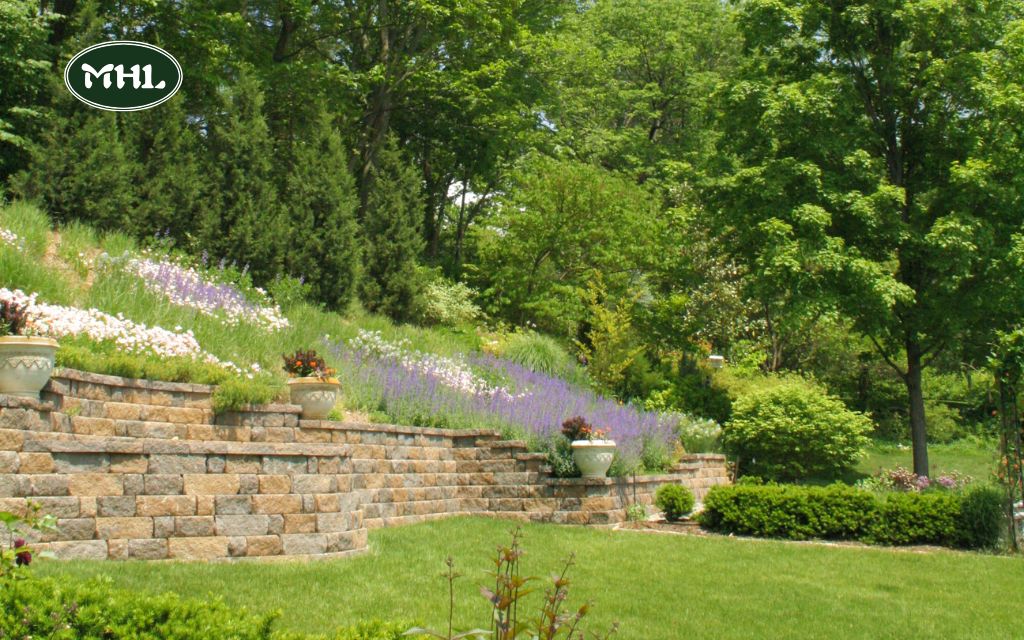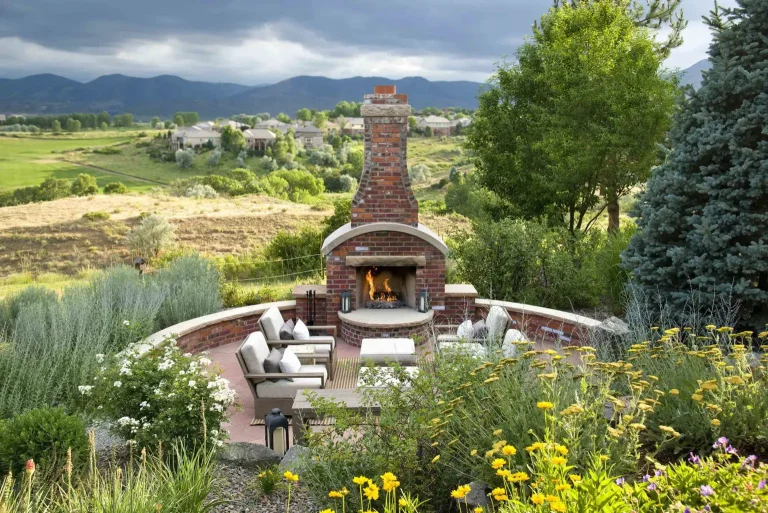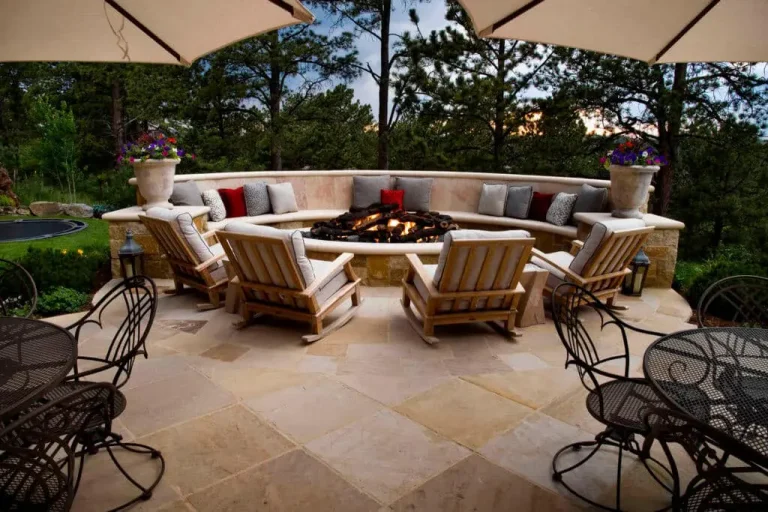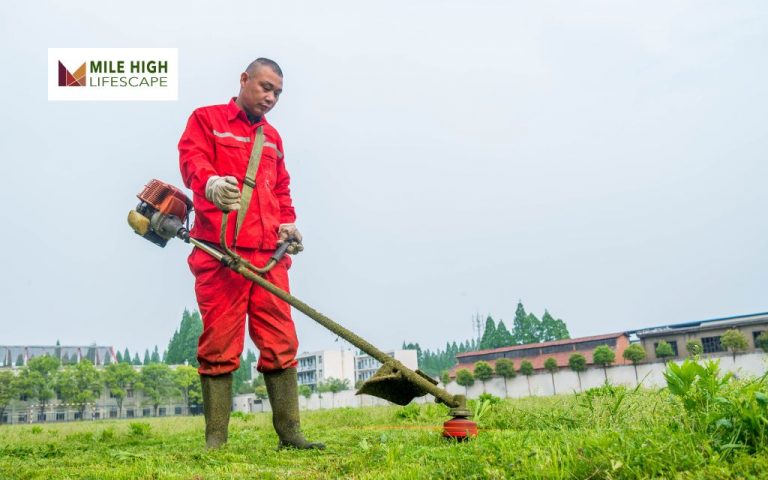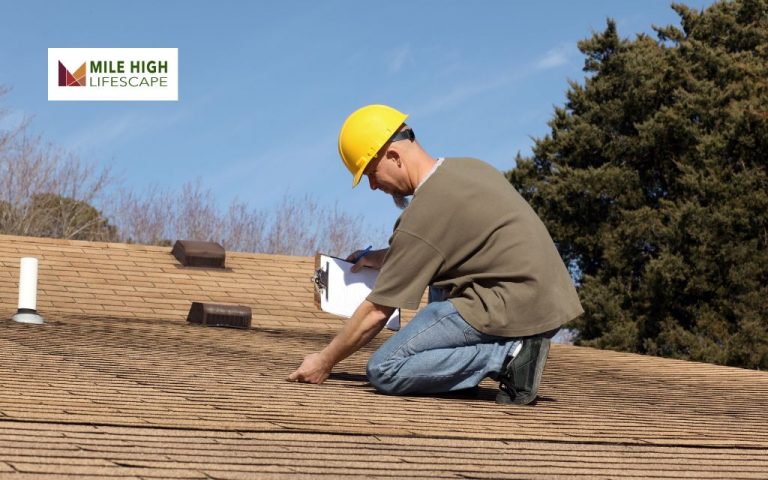Hillside gardens have the power to turn challenging sloped terrains into stunning, functional outdoor spaces. These gardens make the most of natural elevation changes, creating a landscape that’s as visually striking as it is practical.
Gardening on a slope does come with its challenges—such as maintaining stability, choosing the right plants, and managing water flow. However, with thoughtful landscaping and strategic design, these obstacles can be transformed into opportunities to craft a one-of-a-kind outdoor retreat.
Mile High Lifescape is the trusted landscaper to bring your vision to life. Their expertise in creating custom hillside gardens ensures a beautiful and functional solution tailored to your needs. Ready to turn your slope into a show-stopping garden? Let’s explore the possibilities!
Benefits of Hillside Gardens
There are many great benefits to creating hillside gardens, such as:
- Unique Landscape Opportunities: Sloped land lets you create multiple levels, with features like rock walls, terraces, and even stairways, making your garden stand out.
- Natural Drainage: Hillside gardens are great for handling rain. Water naturally flows down the slope, which helps keep your garden well-drained during wet weather.
- Sun Exposure: North-facing slopes get more sunlight, making them perfect for sun-loving plants, while south-facing slopes are ideal for plants that enjoy the shade.
- Warmth for Your Plants: The slope can create a warm microclimate, thanks to the sun hitting it directly or the heat trapped by terracing or retaining walls.
- More Garden Space: Because the land is sloped, you’ll have more usable space compared to a flat garden of the same size.
- Avoid Mowing: If you turn your hillside into a vegetable garden, you won’t have to worry about mowing up and down the hill.
With hillside gardens, you can make the most of your land while creating a beautiful, functional garden!
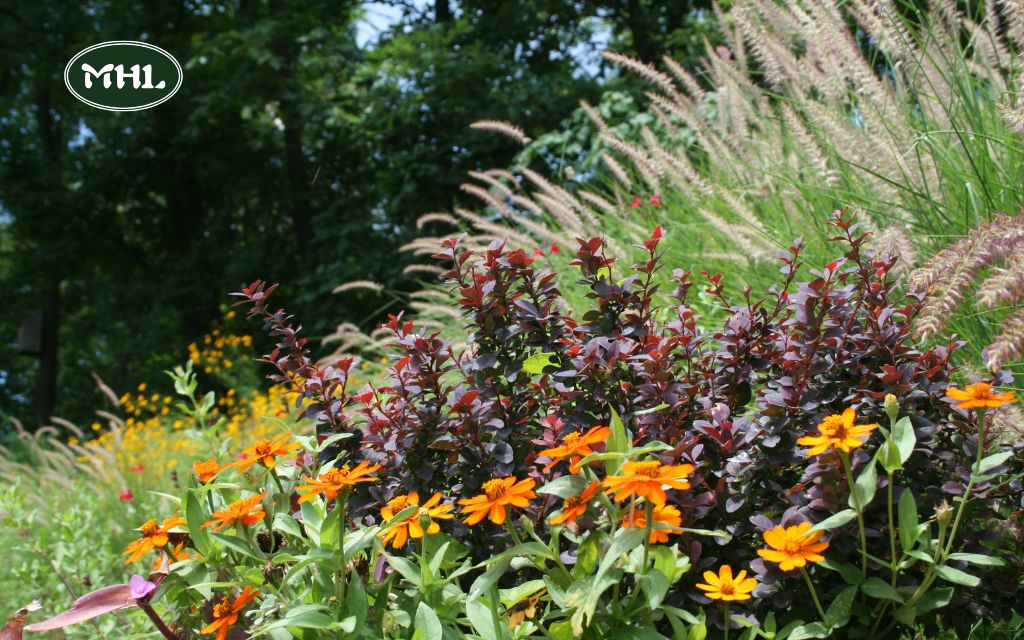
Key Considerations for Hillside Gardens Before Planting
Gradient
The chance of erosion on a hillside depends on how steep the slope is and factors like soil type, the plants that are already there, and how much water runs down the hill. To measure how steep a slope is, we look at the rise over run – this means how much the hill goes up compared to how far it stretches horizontally.
Slopes can be shown as a ratio, like 1:12 (meaning the hill rises 1 foot for every 12 feet across), or as a percentage (1:12 equals 8.33%). If the slope is less than 5% (1:20), there usually aren’t too many concerns about planting.
But for slopes between 8-16% (1:12 to 1:6), you need to plan carefully, as these areas can be harder to walk on, water, and maintain. Slopes over 20% (1:5) are very steep, and you’ll need to think carefully about what plants to use.
A slope over 30% (1:3) is too steep to mow, so you should avoid using grass and choose other plants. Slopes around 50% (1:2) are about as steep as a hill can get and still support plant life.
Soil & Drainage
Steep slopes tend to be drier, so you’ll want to use drought-resistant plants. It’s important to check the soil on your hillside. Some areas might be wetter, like the bottom of the slope, while others higher up may be drier.
Look out for areas that have water running through them or spots where erosion is happening. You can adjust these spots to stop the water from washing away soil. Also, consider if the soil is rocky, sandy, or heavy, as this will affect which plants will grow best.
Growing Conditions
Take note of the growing conditions for your hillside. Does it get lots of sun, or is it mostly shaded? Is it exposed to strong winds, or is it more protected? By choosing plants that fit the conditions, you can reduce the amount of work you need to do.
Current Vegetation
When you’re planning a hillside garden, you might find that plants are already growing there, like grass. Grass can be hard to mow on a slope, and annual plants might not help prevent erosion, especially in winter. Sometimes, the plants that are there are invasive and could spread to other areas. That’s when it’s a good idea to start fresh and plant something new on the hillside.
You may need to clear out some or all of the current plants before you begin. If there’s grass, you can kill it but leave it in place to help stabilize the slope. Use a non-selective herbicide (like glyphosate) that works quickly, allowing you to replant in just a few weeks. You can plant new plants right through the dead grass, and it will help hold the mulch in place as it breaks down and adds nutrients to the soil.
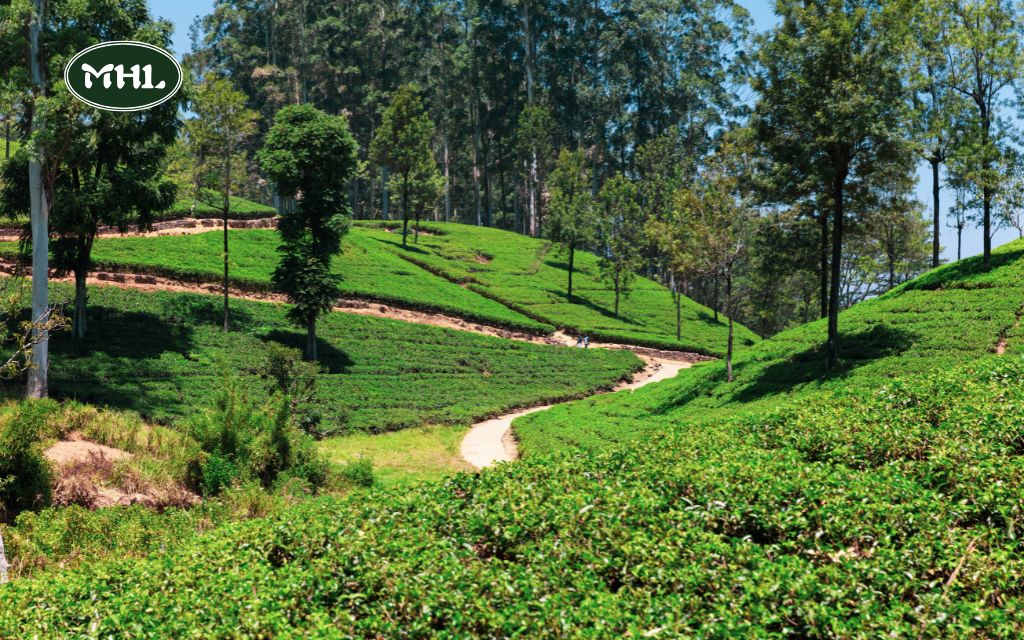
What Are The Best Plants for Hillside Gardens?
These hillside gardens tips will help you choose the right plants that suit the natural slope of your yard!
Perfect Fit for Your Site
Choose plants that fit the conditions of your hillside. Think about the amount of sunlight (sunny or shady spots) and the type of soil (wet or dry). Many hillsides have well-drained soil, so drought-tolerant plants are a great choice for these areas.
Easy to Care For
Opt for low-maintenance plants that don’t need constant attention. It’s hard to climb a steep hill regularly to trim, water, or take care of plants. Choose species that require little care, so you can enjoy your hillside garden without spending too much time on upkeep.
Diverse Mix
Add a variety of plants to your hillside garden. Not only does this make the garden more beautiful and interesting, but it also helps reduce erosion. Different plant sizes and growth patterns can help slow down heavy rainfall, and different types of roots will keep the soil in place. This mix of plants can help protect your hillside from washing away during storms.
Thoughtful Planting Layout
Hillside gardens offer a great chance for creative design. From the bottom of the hill, plants of similar height look nice together. However, just like in flat garden beds, taller plants should be placed toward the back (higher up the hill) so they don’t block the smaller plants in the front.
Be careful not to make the taller plants too big compared to the front ones, or they will look out of place.
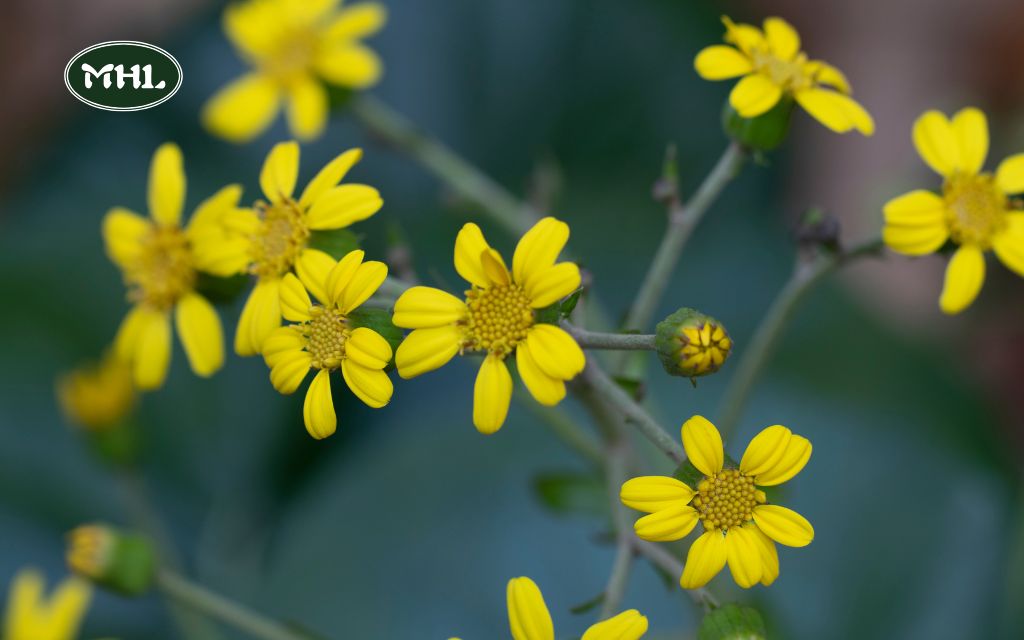
Plants For Hillside Gardens: Some Examples
Here are some great plant examples for hillside gardens:
- Siberian Cypress: This plant has soft, lacy leaves that add texture to your slope. New varieties are tougher and more cold-resistant, like the ‘Celtic Pride.’ Siberian cypress loves the sun but can handle a little shade too.
- Groundcover Roses: These roses are perfect for gentle slopes. They spread across large areas, don’t need much pruning, and bloom with colorful flowers all season.
- Deutzia: This low-growing shrub has a nice rounded shape and pretty bell-shaped flowers, usually in pink, that bloom in the spring. It’s a lovely addition to your hillside garden.
- Catmint: Catmint is a tough perennial with beautiful purple flowers that last for months. These flowers attract butterflies and bees. Catmint loves full sun and is great for adding color to your garden.
- Creeping Juniper: Creeping junipers spread low along the ground and don’t require pruning once they’re established. They come in colors ranging from green to blue-green, so you’ll have year-round color in your garden.
- Forsythia: Forsythia is one of the first signs of spring, with bright yellow flowers that bloom before the leaves even show up. Newer varieties don’t need pruning and stay neat and tidy.
- Sedge Gras: Sedge grass comes in many colors, from variegated to grassy looks, and it’s one of the best ornamental grasses for hillside gardens. It’s drought-tolerant once it’s established and adapts well to most soil types.
5 Hillside Garden Design Ideas You Can Try
Stabilize Your Hillside Gardens
The soil on a hillside can be tough to work with. It often washes away easily, taking away nutrients that plants need to grow. Sometimes, you might find that the hillside is mostly made up of rocks with just a thin layer of soil on top. In these cases, you’ll need to create small planting pockets and add extra soil to help your plants grow.
For example, one gardener used astilbe and hosta plants. These plants can grow in the shade of a hillside and are tough enough to survive in poor soil. By dividing the plants, she was able to cover the whole slope with greenery in just a few years.
Terraces with Stone for a Stunning Slope
Stone walls are a great way to break up a hillside into smaller, manageable areas. While building a stone wall takes a lot of work at first, it creates a sturdy and attractive structure that helps keep the soil in place.
The stone walls also create planting spaces where you can work easily. Plus, the stones hold heat, which can create a warmer spot for plants that might not survive in other parts of your yard.
Taming a Hillside in Small Bites
When the hillside is really steep, adding stairs can help make it easier to get around. But you don’t have to tackle the whole hill at once! Start with the area closest to your home and create planting boxes.
This way, you can easily work on smaller sections without needing heavy tools. These boxes not only make gardening easier, but they also create a nice space for relaxing or having friends over.
Natural Rock Garden on the Slope
One challenge of landscaping a hillside is getting the plants to stay in place before they wash away. Plants need water to grow, but watering a steep slope can just lead to runoff. If you don’t want to terrace your hillside, a good way to help anchor the soil is by adding large rocks and boulders. They hold the soil in place while your plants get established.
Transform Your Hillside into a Garden Walk
You can turn your hillside into a beautiful garden path by creating a terraced walkway with the planting areas higher up. This design makes it feel like you’re surrounded by flowers as you walk through. Instead of regular steps, this homeowner used stepping stones, which are safe to walk on and add charm.
The path is lined with vibrant perennials, and to add even more interest, containers and plant stands are placed on the lower levels. This creates focal points and adds levels to the journey. Plus, people passing by on the road can enjoy the full beauty of the hillside gardens, instead of just seeing a small section like they would with a flat garden.
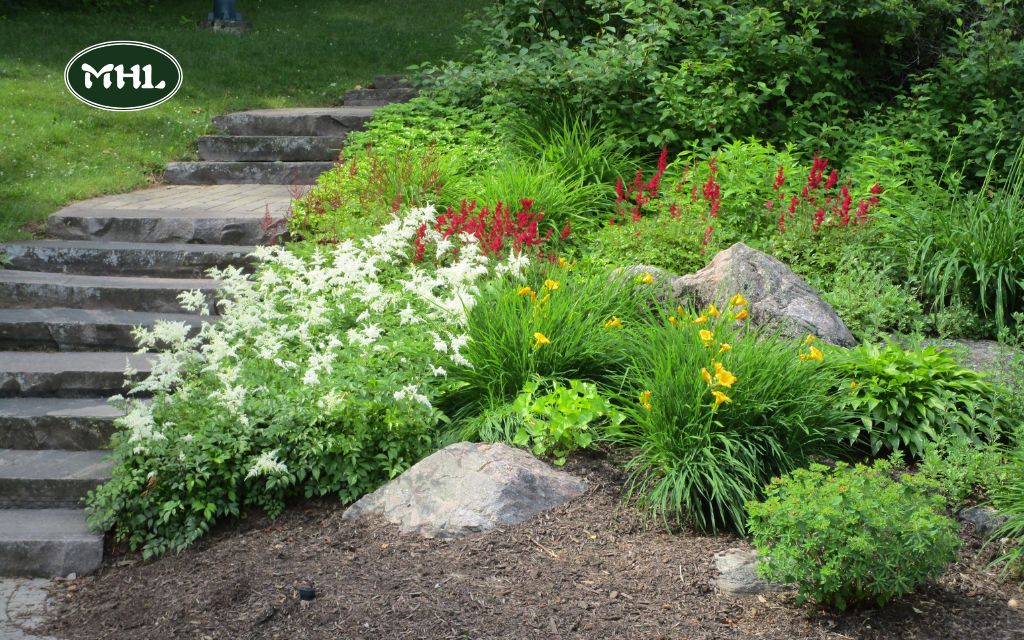
Steps to Build a Hillside Garden
Creating a hillside garden transforms a challenging slope into a vibrant, functional landscape. Here’s a step-by-step guide to help you design and build your own hillside oasis:
Planning the Layout
Begin by assessing the slope’s grade, soil type, and drainage to inform your design. Sketch a scaled plan highlighting terraces, pathways, and designated planting areas. This strategic layout will enhance accessibility and aesthetic appeal.
Preparing the Site
Clear the area of debris, vegetation, and large rocks to prepare for construction. Excavate and level sections where terraces and paths will be established. Implement appropriate drainage solutions, such as concealed drains or perforated pipes, to manage water runoff and prevent erosion.
Constructing Retaining Walls and Paths
Build retaining walls to create flat terraces and prevent soil erosion. Select durable materials like stone, wood, or concrete that complement your garden’s aesthetic. Ensure proper leveling and structural integrity during construction. Incorporate steps or pathways using materials suitable for the slope’s gradient to facilitate easy navigation.
Planting and Mulching
Choose plants with deep root systems to stabilize the soil and prevent erosion. Groundcovers and shrubs are excellent choices for hillside gardens. Arrange plants thoughtfully to create visual interest and ensure they receive appropriate sunlight exposure. Apply mulch to retain soil moisture, regulate temperature, and suppress weed growth, contributing to a healthy and low-maintenance garden.
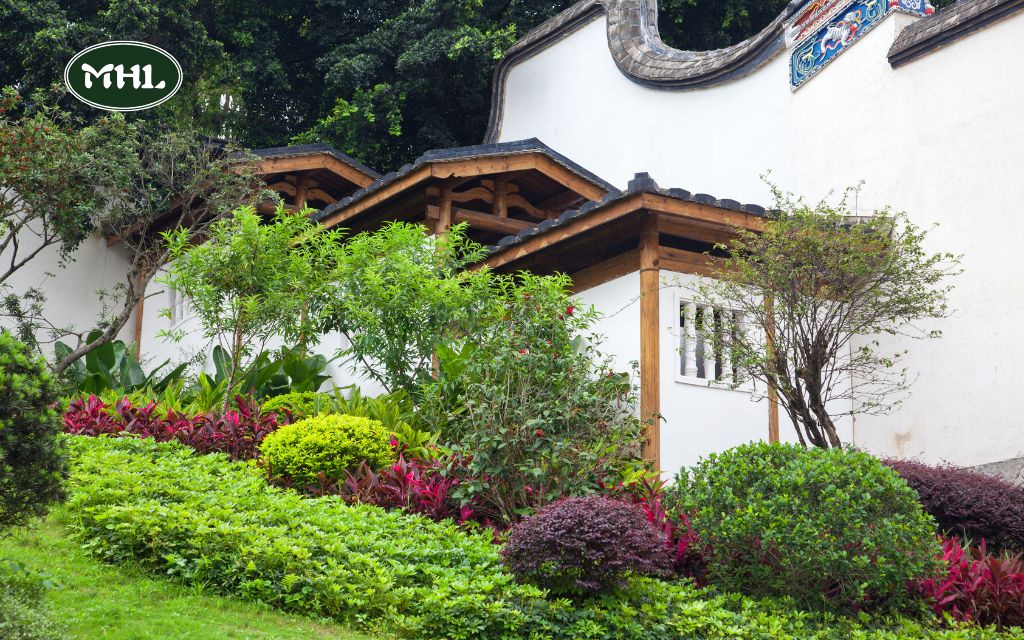
Mile High Lifescape: Reliable Landscaping Service in Denver
Mile High Lifescape, with almost 20 years of experience, is Denver’s top landscaping service, known for turning tough landscapes into beautiful hillside gardens. They specialize in creating gardens that are not only gorgeous but also practical, solving problems like erosion and poor drainage.
By using techniques like terracing, retaining walls, and choosing the right plants, they make sure the hill gardens fit perfectly with Denver’s natural land. Clients love their personal touch and careful attention to detail, making their hillside gardens both beautiful and sustainable.
FAQs about Hillside Gardens
How can I prevent soil erosion on a hillside garden?
Implementing terracing or retaining walls can effectively manage soil erosion by creating flat planting areas and reducing runoff.
What plants are best suited for hillside gardens?
Drought-resistant ground covers like creeping juniper and native shrubs with deep root systems are ideal, as they help stabilize the soil and require minimal maintenance.
How do I water plants on a slope efficiently?
Drip irrigation systems are recommended for hillside gardens, as they deliver water directly to plant roots, minimizing runoff and ensuring efficient water usage.
Can I incorporate pathways in my hillside garden?
Yes, designing accessible paths or stairways is important for safety and maintenance, allowing easy navigation across different levels of the garden.
Is it possible to have a lawn on a hillside?
Maintaining a traditional lawn on a steep slope can be challenging. Opting for low-maintenance ground covers or terraced planting beds is often more practical and sustainable.
Conclusion
Hillside gardens are a perfect way to transform sloped land into a beautiful, practical space. They prevent erosion, improve drainage, and add unique charm to your home. With thoughtful design, including retaining walls, terraces, and drought-tolerant plants, you can create a stunning garden that fits your style.
Mile High Lifescape is the trusted expert in crafting sustainable hillside gardens. Let their team turn your challenging terrain into a gorgeous, functional retreat that you’ll enjoy for years to come!
